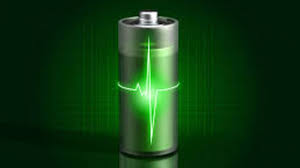Your battery is a rechargeable battery with a limited lifespan. These batteries gradually lose charge and sometimes take more time to recharge. If you want to extend the life of your batteries, you need to take good care of them. This means you should develop better charging habits and pay attention to battery storage. Below we will share some basic charging tips for Li-ion batteries.

Is it better to keep Li-ion batteries charged?
Yes, it’s best to keep the Li-Ion battery charged. You can take care of the battery in these ways. You can leave your device powered up overnight.
This won’t be a huge problem if you don’t unplug the device right after charging it. That charger is smarter than you might think. You can leave the charger plugged in overnight or even all day. The charger will stop charging as soon as it is fully charged.
Charge your device as much as possible.
Lithium-ion batteries don’t respond well if you charge them and then use them to the last drop. If you charge them at appropriate intervals, you’ll get a good response from the battery.
Don’t let it get overcharged.
The biggest danger to your laptop battery, phone battery, and tablet battery isn’t overcharging, it’s heat. With that in mind, if you can, it’s a good idea to remove the laptop’s battery while it’s plugged into the wall. The trick is that if you’re using your computer without a battery, you’re in danger of shutting down in the event of a power outage or an unsuitable power adapter. Weigh your preferences.
If you can’t or don’t want to drain your laptop battery, at least make sure you have good airflow. Do not block cooling vents. The fan can even be pulled up with the stand.
Do Li-Ion batteries need to be fully charged the first time?
unnecessary. You don’t have to fully charge a Li-Ion battery the first time. Lithium-ion batteries have the highest usable range from the start, and a 1st charge is no different than a 10th charge.
All you need to do: Just plug in the charger and get started.
Normal use
Lithium-ion batteries have a lifespan of at least 300-500 charge and discharge cycles, typically 2-3 years. Throughout the life cycle, lithium-ion batteries typically experience capacity loss due to a variety of factors, including charge cycles, storage, temperature changes, usage patterns, and overall aging. To limit the risk of damaging the battery, use only the designated smart charger.
Hot and cold weather use
Lithium-ion batteries are comparable to humans in that none of them behave exactly the same, and they operate best at temperatures that are not too hot or too cold.
These batteries operate better at high temperatures than at low temperatures because heat reduces physical stability and speeds up chemical reactions inside the battery. A side effect of this method is that it puts stress on the battery, which can result in a shorter lifespan with continued use in hot conditions.
What’s the best way to charge a Li-Ion battery?
Charge your device
If your battery is at or below 50%, plug in the charger. You only need to charge your device’s battery when it’s fairly low, as having a fully charged battery all the time won’t enhance your device’s capabilities. If you want to check your device’s battery, look for the small battery icon in the menu bar. If you’re on a laptop, float over the icon to see the percentage. If you are using a smartphone or tablet, click the icon or expand the menu to see the percentage meter.
>>>>>>>>>>>>Battery
Thanks for reading, hope it helps!
Friendly reminder: If you need to replace the battery, this battery store will be a good choice: www.batteryforpc.co.uk
